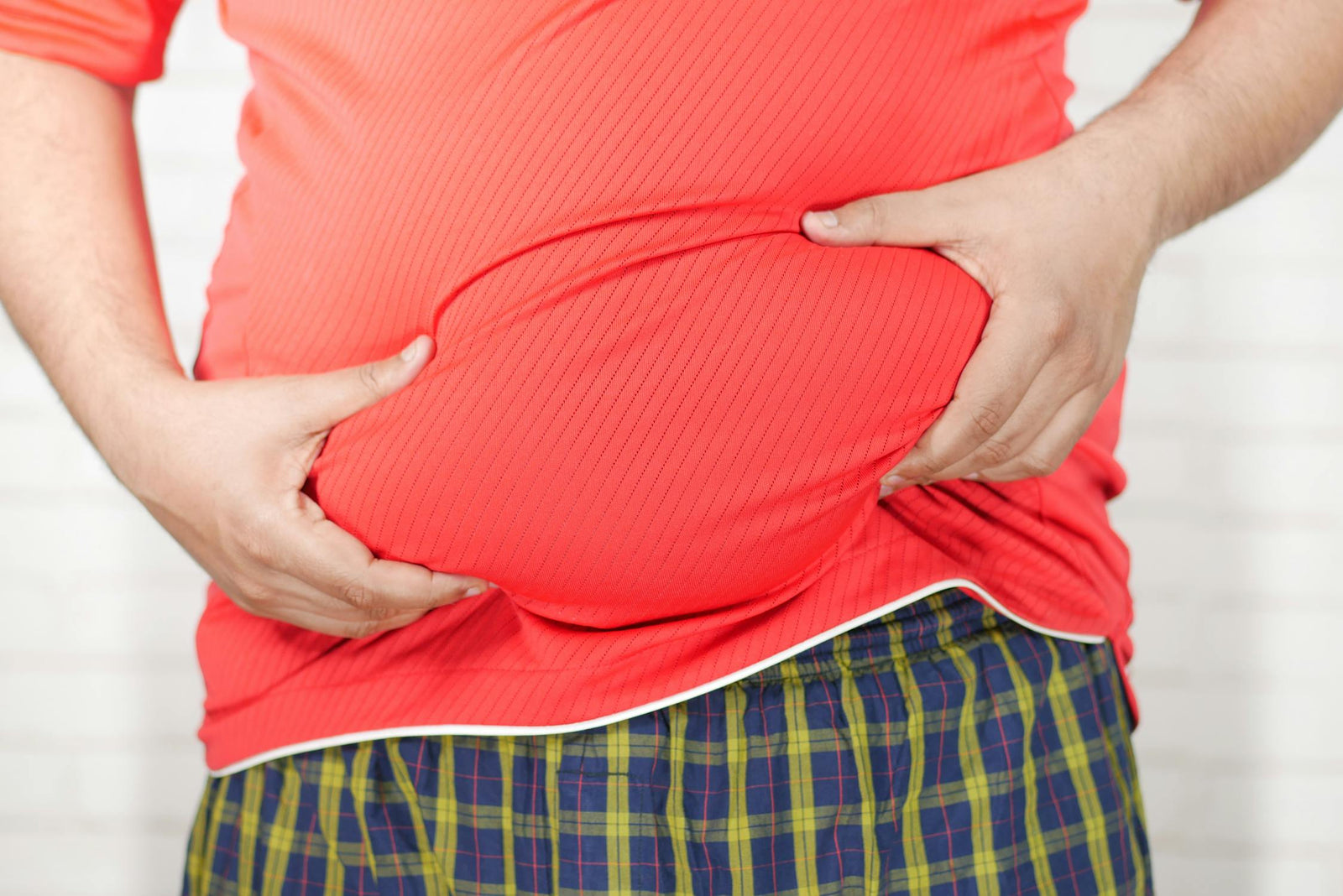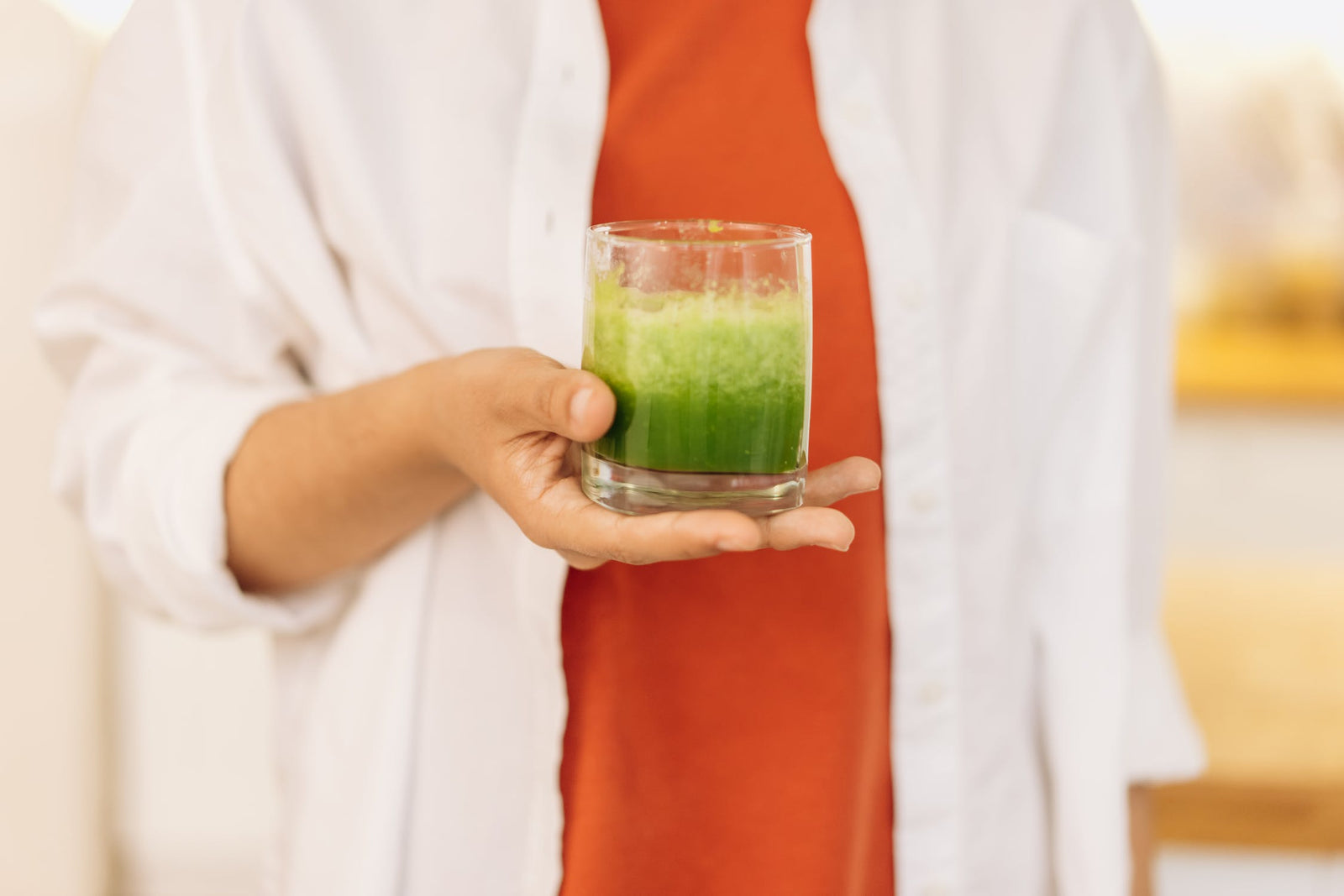Accessories
Check out our full lineup of yoga accessories to help you with your daily meditation practice and fitness goals...
Try our new Cork Yoga Brick for soft but solid support
Check out our full lineup of yoga accessories to help you with your daily meditation practice and fitness goals...
UK Residents: Discover Natural Ways to Stop Leg Swelling
June 06, 2025 9 min read
Did you know that nearly 1 in 5 adults over the age of 50 get leg swelling?
Leg swelling can be due to fluid, poor blood flow, or health issues. It's a big problem for many, but it's more common in older people. We want to help you find easy, non-invasive ways to feel better.

Making small changes in your life can help a lot. In this article, we'll look at natural ways to lessen leg swelling. You can easily add these to your daily routine.
Key Takeaways
- Understand the common causes of leg swelling
- Learn simple exercises to improve circulation
- Discover dietary changes to reduce fluid retention
- Explore home remedies to alleviate swelling
- Find out how to incorporate these methods into your daily life
Understanding Leg Swelling: Causes and Symptoms
It's important to know why legs swell and what symptoms to look for. Leg swelling, or edema, happens when fluid builds up in the legs. This can be due to many reasons.
Common Causes of Leg Swelling
Many things can cause leg swelling. This includes chronic venous insufficiency, a bad diet, some medicines, and not moving much. We'll look at these reasons to help you find out why your legs might be swelling.
| Cause | Description |
|---|---|
| Chronic Venous Insufficiency | A condition where the veins have problems returning blood to the heart due to issues like faulty valves. |
| Poor Diet | Eating too much salt and processed foods can make fluid stay in your body. |
| Certain Medications | Some medicines, like those for high blood pressure or diabetes, can make your legs swell. |
| Decreased Mobility | Not moving much can cause fluid to build up in your legs. |
Symptoms to Look Out For
Symptoms of leg swelling can be mild or very bad. It's key to watch for these signs to know what to do next.
- Pain or discomfort in the legs
- Swelling that gets worse over time
- Redness or warmth around the swollen area
- Difficulty walking or moving because of swelling
When to Seek Medical Advice
If your swelling is severe, hurts a lot, or makes it hard to move, see a doctor. Also, if you see signs of infection like redness, warmth, or fever, get medical help right away.
Knowing why legs swell and what symptoms to watch for is the first step to feeling better. It helps you find good ways to treat leg swelling and keep your legs healthy.
Natural Remedies to Reduce Leg Swelling
We can fight leg swelling with easy natural steps. These steps are simple and fit into your daily life.
Elevation of Legs
Elevating your legs is a simple trick. It boosts blood flow and cuts down fluid build-up. Here's how to do it right:
- Lie down on a comfy spot.
- Use a pillow or cushion to lift your legs above your heart.
- Stay like this for 15-20 minutes, 2-3 times a day.
This method can greatly lessen swelling and boost blood flow.
Compression Socks and Garments
Compression socks and clothes push fluid up towards the heart. This helps reduce swelling. When picking compression socks:
- Make sure they fit right for the best compression.
- Go for a compression level that meets your needs (mild, moderate, or firm).
Benefits of Compression Socks:
| Benefit | Description |
|---|---|
| Improved Circulation | Boosts blood flow back to the heart. |
| Reduced Swelling | Lessens fluid build-up in the legs. |
| Increased Comfort | Offers support and eases discomfort. |
Gentle Exercises and Stretching
Doing gentle exercises can help your circulation and lessen swelling. Some good ones are:
- Ankle pumps: Sit or lie down and move your ankles up and down.
- Glute squeezes: Squeeze and release your glute muscles.
- Toe curls: Curl your toes under and then let go.
These exercises are easy, work well, and can be done anywhere. They're perfect for your daily routine.
The Role of Diet in Managing Leg Swelling
What we eat can really affect our legs. Eating the right foods can help make our legs feel better. We'll look at how food choices can help with this.
Foods to Include
Adding certain foods to your diet can help with leg swelling. Foods high in magnesium, protein, and fibre are good. Here are some examples:
- Green leafy vegetables like spinach and kale
- Nuts and seeds such as almonds and flaxseeds
- Whole grains like brown rice and quinoa
- Fatty fish rich in omega-3 fatty acids, such as salmon
These foods can help reduce swelling and keep you healthy. Magnesium helps with fluid balance, and fibre fights inflammation.
Foods to Avoid
Some foods can make leg swelling worse. It's best to limit or avoid:
- Processed foods high in salt
- Sugary snacks and drinks
- Foods high in saturated and trans fats
Staying away from these foods can help keep swelling down. Too much salt can make swelling worse.
Staying Hydrated
Drinking enough water is key to managing leg swelling. Water helps get rid of toxins and keeps fluid balance. Try to drink 8-10 glasses a day. More if you're active or it's hot outside.
| Hydration Tips | Benefits |
|---|---|
| Drink water regularly throughout the day | Helps maintain fluid balance |
| Avoid sugary drinks and caffeine | Reduces fluid retention |
| Monitor your urine output | If it's pale yellow or clear, you're likely hydrated |
By choosing the right foods and drinking enough water, you can manage leg swelling well. Try these tips with other natural remedies for the best results.
Herbal Remedies for Swelling Relief
We look into herbal remedies for swollen legs. These natural treatments have been used for ages. They can help reduce swelling and ease discomfort.
Popular Herbs for Leg Health
Some herbs are great for fighting leg swelling. They have anti-inflammatory powers. Here are some top herbs:
- Horse Chestnut: It boosts circulation and cuts down inflammation.
- Butcher's Broom: It makes blood vessels stronger and improves blood flow.
- Ginger: It has anti-inflammatory effects that lessen swelling.

How to Use Herbal Remedies
Herbal remedies come in many forms. You can find them as teas, tinctures, or creams. Here's how to use them:
| Herb | Form | Usage |
|---|---|---|
| Horse Chestnut | Tincture/Capsule | Follow the label's instructions |
| Butcher's Broom | Tea/Capsule | Drink tea 2-3 times a day or take capsules as directed |
| Ginger | Tea/Topical Cream | Drink tea 2-3 times a day or apply cream as needed |
Potential Side Effects
Herbal remedies are mostly safe but can have side effects. They might also interact with other medicines. Be aware of these risks:
- Allergic Reactions: Some herbs can cause allergies.
- Interactions: They might not work well with other medicines.
- Side Effects: You might get stomach problems or skin irritation.
Always talk to a doctor before trying herbal remedies. This is true if you have health problems or take other medicines.
Lifestyle Changes to Prevent Leg Swelling
Changing our habits can help stop leg swelling. Simple daily changes can greatly reduce swelling risk. Let's look at key lifestyle changes that help.
Importance of Regular Movement
Moving regularly keeps blood flowing well and stops leg swelling. A short walk or desk stretches help a lot. Try to do 30 minutes of exercise each day for healthy legs.
- Take regular breaks to stand up and stretch if you have a desk job
- Engage in activities like swimming or cycling, which are easy on the joints
- Try to incorporate more walking into your daily routine
Weight Management Tips
Keeping a healthy weight is key to avoiding leg swelling. Too much weight puts extra pressure on legs. Eat well and exercise to keep your weight in check.
- Eat a balanced diet rich in fruits, vegetables, and whole grains
- Stay hydrated by drinking plenty of water throughout the day
- Aim to lose weight gradually if you're overweight, as rapid weight loss can have negative effects
Smoking Cessation: The Benefits
Stopping smoking greatly improves your health and reduces leg swelling risk. Smoking harms blood flow, causing swelling. Quitting smoking boosts circulation and reduces swelling.
Tips for Quitting Smoking:
- Seek support from friends, family, or a support group
- Consider using nicotine replacement therapy or other cessation aids
- Stay busy with activities that distract you from cravings
By making these lifestyle changes, you can control leg health and lessen swelling. Small changes can lead to big improvements.
The Impact of Heat and Cold Therapy
Managing leg swelling can involve heat and cold therapy. Both can help, but knowing how to use them is key.
Using Cold Packs Effectively
Cold packs can reduce swelling and pain. Wrap them in cloth to avoid skin contact, which can be uncomfortable or even harmful. Use them for 15-20 minutes, several times a day, after activity or at night.
Benefits of Warm Baths
Warm baths can also help. They improve blood flow and reduce swelling. A warm bath before bed can relax you and help you sleep better. Make sure the water is not too hot.
Alternating Hot and Cold Treatments
Switching between hot and cold can be very helpful. It boosts blood flow and cuts down swelling. Start with warm water, then use a cold pack. This mix can improve blood flow and reduce swelling. But, listen to your body and adjust as needed.
Adding these therapies to your routine can help relieve leg swelling naturally. You might prefer cold packs, warm baths, or both. These natural methods can enhance your well-being.
Importance of Footwear Choices
What shoes we wear is very important for our legs. The right shoes can help, while the wrong ones can make things worse.
Selecting Supportive Footwear
Choosing shoes that support our feet is key. Shoes that fit well and have good arch support help reduce leg edema naturally. Look for shoes with a wide toe box, lots of cushioning, and a firm heel to keep your foot in place.
For more tips on swollen legs, check out Healthline's guide on home remedies for swollen feet.
| Feature | Benefit | Recommendation |
|---|---|---|
| Arch Support | Reduces strain on the foot and leg | Look for shoes with good arch support |
| Cushioning | Absorbs shock and reduces pressure | Opt for shoes with adequate cushioning |
| Wide Toe Box | Prevents constriction and promotes comfort | Choose shoes with a spacious toe box |
The Role of Insoles
Insoles can also help make our feet more comfortable. They can add extra support and cushioning. This can help with swollen legs.
Avoiding High Heels
High heels can make leg swelling worse. They can also hurt our circulation. It's better to wear lower heels or shoes that are more comfortable.
By picking the right shoes, we can help our legs feel better. This is good for our overall health.
Exploring Alternative Therapies
Looking into alternative therapies can show new ways to fight leg swelling. These methods, used with traditional treatments, help in a big way. They make us feel better and improve our health.
Acupuncture for Leg Swelling
Acupuncture is a traditional Chinese method. It uses thin needles to help the body heal and improve blood flow. It's great for leg swelling because it boosts blood flow and cuts down on inflammation.
Studies say acupuncture helps a lot with chronic leg swelling. It's good to talk to a licensed expert for safe treatment.
Massage Techniques for Relief
Massage is another way to ease leg swelling. It helps blood flow and breaks down fluid. This makes swelling go down and helps healing.
Try gentle, regular massage by a pro. It helps keep blood flowing well and swelling down.
Benefits of Reflexology
Reflexology is about pressing points on the feet. It's based on the idea that feet points connect to body parts. This includes parts that help with blood flow and fluid balance.
Reflexology Benefits are not just for swelling. It also relaxes and lowers stress. Always see a qualified person for reflexology.
In short, acupuncture, massage, and reflexology are great for leg swelling. Adding them to your treatment plan can really help. You'll feel better and live better.
Monitoring Your Progress and Adjusting Treatments
It's key to watch how your legs feel and change what you do if needed. This way, you can find the best ways to help your legs. And you'll know what to do to take care of them.
Tracking Your Swelling
Writing down when your legs swell can help a lot. It lets you see patterns and what might make it worse. This helps you find better ways to stop your legs from swelling.
Identifying Triggers
After you start tracking, you can find out what makes your legs swell. It might be some foods, activities, or things around you. Knowing this lets you avoid or lessen these things, helping your legs feel better.
Seeking Professional Advice
If your legs keep swelling or get worse, see a doctor. They can give you advice that fits you. They can also check for other health issues that might be causing your swelling.
FAQ
What are the most effective natural ways to stop leg swelling?
Elevate your legs and wear compression socks. Gentle exercises help too. Eating well and staying hydrated is key. Regular movement and managing weight also helps.
How can I reduce swelling in my legs naturally?
Elevate your legs and wear compression socks. Do ankle rotations and toe wiggles. Herbal remedies, heat, and cold therapy can also help.
What foods should I include in my diet to help manage leg swelling?
Eat foods rich in antioxidants and omega-3s. Leafy greens, berries, and fatty fish are good. Drinking water is also important.
Are there any herbal remedies that can provide relief from leg swelling?
Yes, horse chestnut, butcher's broom, and grape seed extract may help. But talk to a doctor first. They can cause side effects or interact with medicines.
How can I prevent leg swelling through lifestyle changes?
Move more and keep a healthy weight. Quit smoking and wear good shoes. Avoid high heels too.
Can heat and cold therapy help alleviate leg swelling?
Yes, they can. Cold packs reduce inflammation. Warm baths improve circulation. Try both for best results.
How can I monitor my progress and adjust my treatments?
Keep a swelling diary. It helps track your progress. Review it often and talk to a doctor to adjust your care.
When should I seek medical advice for leg swelling?
See a doctor for persistent or severe swelling. Pain or trouble walking is a sign to seek help. Watch for signs of infection like redness or pus.

Reduce Bloating: How Superfoods Can Aid Digestive Comfort
February 28, 2024 9 min read
Bloating, a common digestive issue, affects many individuals worldwide. Characterised by a feeling of fullness, tightness, or swelling in the abdomen, bloating can be both uncomfortable and distressing. While it's often a result of overeating or consuming certain foods that the body finds hard to digest, bloating can also be a symptom of various underlying health conditions. It's a physical discomfort that can also impact one's self-esteem and quality of life.
Read More

Green Smoothie Recipes: Incorporating Superfoods for a Health Boost
February 21, 2024 10 min read
Green smoothies are more than just a health trend; they are a powerful way to enhance your daily nutrition and overall well-being. At the heart of these vibrant drinks are leafy greens – packed with essential vitamins, minerals, and fibre – blended into a convenient and delicious form. But what elevates a green smoothie from merely nutritious to a powerhouse of health? The answer lies in the incorporation of superfoods.
Read More

Discover the Benefits of Adding Green Drink Smoothies to Your Daily Routine
February 17, 2024 7 min read
Discover the benefits of adding green drink smoothies to your daily routine. Enhance your health and well-being with nutrient-rich beverages that improve digestion, boost energy levels, and support weight management. Start your journey to better health with Lean Greens today.
Read More